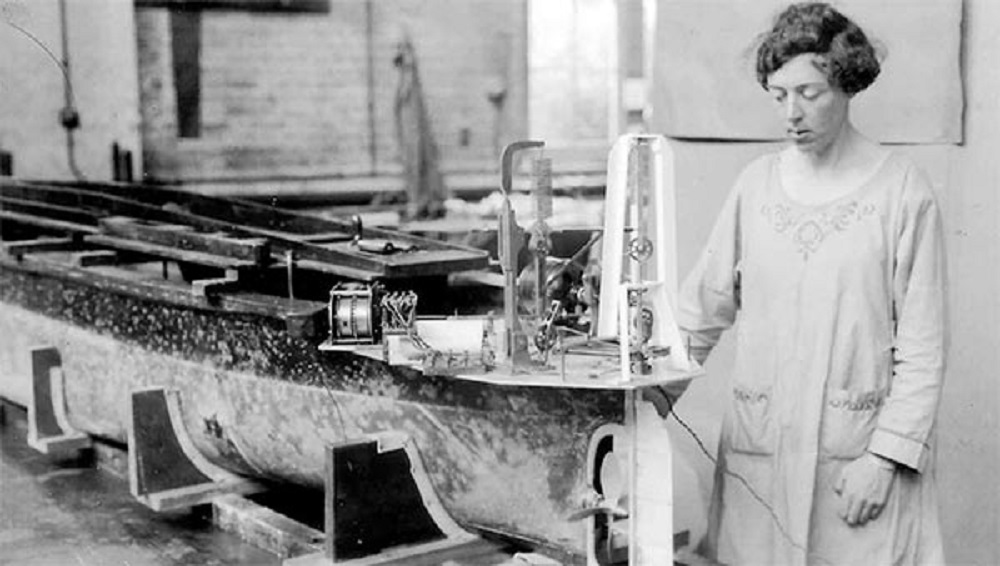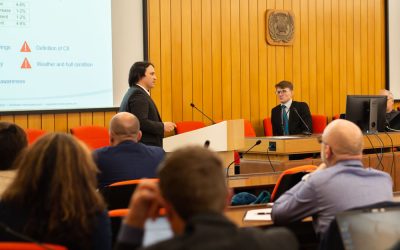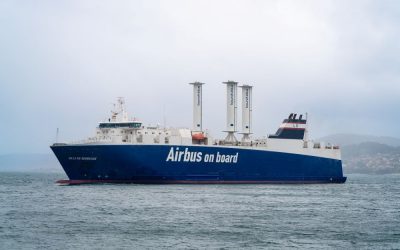To coincide with Women in Maritime Day on 18 May, RINA historian Mark Barton looks at the life of one of the Institution’s first women members
One of the first three female naval architects to be elected to member at the 1919 AGM. Eily Keary graduated from Cambridge with a degree in Mechanical Sciences. In 1923, she was the first woman to move from being an Associate to an Associate Member and the first to become a full member in 1956. Blanche and Rachel, who became Associates alongside her having both retired from business by then. In supporting the motion to allow women membership, Sir Alfred Yarrow stated: “The last destroyer we tried attained during four hours a speed of 39.6 knots, fully equipped. I think that is the best speed that has ever been attained. The lines of that ship were determined partly by a young lady: Miss Keary.
Eily Keary was the first woman to have a paper published in the RINA Transactions and had already presented a paper to RINA prior to her election. The shipping company owner, Sir William Smith, described the paper’s significance stating: “It broke new ground, and gave us very great information as to the variation in the transverse stability of a vessel when proceeding under way, in comparison with her stability when at rest in still water.”

The NPL test tank in Teddington. Source: Imperial War Museum
Eily worked at the ‘National Experiment Tank’ at the National Physical Laboratory in Teddington. This 549-foot-long tank, now often forgotten, was presented to the nation in 1911 by Sir Alfred Yarrow.
Eily was an assistant to the tank supervisor George Baker. Having trained as a shipwright at Portsmouth Dockyard, and then gone through the Royal Corps of Naval Constructors training, and rising to be Director of Naval Construction, Baker was then sent to be assistant to Robert Froude, at the Admiralty’s Haslar tank. Her work was partly on the hydrodynamic properties of seaplane hulls as well as the testing of other naval hulls.
Following the departure of the pre-war assistant to the tank supervisor, a naval architect called G H Miller (first name unknown), to serve in the Naval Division, J L Kent moved up from Junior Assistant to replace him. Eily, after leaving Cambridge in June 1915, became the Junior Assistant, in effect the third of the researchers, as opposed to those operating the tank and making the models. She was initially brought to work on improvements to seaplane floats. Miller had a series of Boys’ Own style adventures that deserve an article in their own right – he was captured near Antwerp, then escaped and became involved in the early attempts to land aircraft on ships but unfortunately died in a crash in 1918.
The work at the Teddington tank during World War 1 forms the basis of many systems that we now take for granted. The researchers developed mines with increased reserves of buoyancy so they stayed in situ in tidal currents; anti-submarine nets; the ability to fire torpedoes from a deck on higher speed craft, and indeed how to improve the speed of craft in particular the high-speed destroyers used to hunt submarines. The impact on transverse stability of speed was discovered at Teddington during this period. The tank itself was renamed as Tank No 1 when a second was added on the same site during WW1 and, in 1959, the facility was moved to Feltham and a larger tank.
Eily did not end her employment after WW1, nor did she decamp to the new seaplane testing tank at Farnborough where the porpoising characteristics of seaplanes were to be studied. Her post-war work involved research and design work for Thornycroft, but she was noted for her work on the interactions between barges when several were being towed by a single vessel. Eily continued at the Tank until 1929, when she married another naval architect Frederick Smith and became Mrs Smith-Keary. She continued to be involved with the testing and wrote further research papers until the couple moved out to the Antipodes in 1940.
Since 2019, the legacy of Keary and RINA’s other inaugural women inductees has been celebrated through RINA’s annual Eily Keary Award, which recognises efforts to increase equality, diversity and inclusion in the maritime industry. Find out more here about how to nominate an individual, company or organisation you believe is worthy of consideration.




